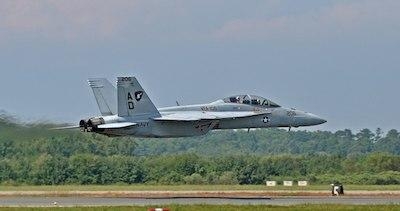National Commission on Military Aviation Safety (NCMAS) To Examine Five Years Of Accidents
Created by the John McCain National Defense Authorization Act of 2019, a committee of eight aviation and transportation safety experts have been tasked with identifying the causes of and ways to avoid aviation accidents by going from site to site and talking with everyone in the field, from senior commanders to trainers and maintainers.

Congress established the National Commission on Military Aviation Safety (NCMAS) in early 2019 and tasked it with five areas to examine: assess the rate of accidents; assess the underlying cause of physiological episodes; identify the underlying causes regarding aircraft availability; assess the causes that contributed to accidents; and make recommendations.
The commission is examining events between 2013 and 2018, a timeline that began with the Budget Control Act of 2011 taking effect in 2013, which ordered a cut in defense spending and discretionary domestic spending to reduce the federal deficit.
During a visit to Naval Air Station Patuxent River in October, NCMAS Vice Chairman Richard F. Healing spoke about the commission’s mission following tours and discussions with program offices based here. Patuxent River is one of more than 70 units the commission has visited since June when it began its work in earnest.
“It’s far too soon to say that we have come to any conclusions … but [we] do realize that there are a number of things that have happened as a result of sequestration,” Healing said. “Congress, in their challenge to us, said to look at between 2013 and 2018. I am sure they were interested in the impact on the services when the Budget Control Act went into effect. The reality is that we’re seeing a lot of things that could be related to the funding cuts, some of which resulted in reductions in personnel, often in key positions.”
Healing, a professional engineer and internationally recognized transportation safety expert, is a retired captain from the U.S. Coast Guard. In addition to other career positions, he served as the director of safety and survivability for the DON from 1985 to 2002 where he focused on aviation safety and developed initiatives to rapidly bring state-of-the-art safety and survivability technology into the Navy and Marine Corps.
Healing said the site visits are allowing commission members to meet with Soldiers, Sailors, Airmen and Marines, including maintainers, trainers, pilots and leaders in an environment where the personnel feel comfortable to speak freely, with junior enlistees meeting with commission members separately.
The commission is also looking at all accidents from Class A — accidents which result in the loss of life or aircraft — to Class C, where accidents resulted in minor damage to the aircraft or minor to no injuries to personnel. The commission is examining reports compiled by the accident investigation boards without questioning the findings.
“We’re using whatever they have concluded as a fact that we’re going to deal with,” Healing said. “We’re looking at all the accidents. The Class A accidents are the ones that grab everyone’s attention because of fatalities and loss of very valuable assets. But we realize the difference between a Class A and a Class C accident could be as little as inches or seconds. We know there is a lot to be learned from the incidents that actually are not big accidents.”
Switching focus to physiological episodes, Healing said he had recently attended a SAFE symposium in Reno, Nevada, which included numerous briefings on PEs. The causes behind the incidents continue to be a main focus of Naval Aviation and align with one of the commission’s main tasks. He said the commission has also been looking at work conducted at the Air Force Research Lab and the Navy Aero Medical Research Unit, both in Ohio.
PEs occur when aircrews experience physiological symptoms, which may impair their ability to perform cockpit duties, and can result from many factors, including normal operations in the highly dynamic operating environment, systems malfunctions and various human factors. Symptoms can range from dizziness to degradation of cognitive function, posing serious risks to aviators.
Healing said training is yet another major focus of the commission, citing that there seems to be an open debate regarding how much computer-simulated flight versus hands-on flight training is effective.
“In some cases, we’ve heard maintainers say they don’t have enough hands-on training, yet, at the same time, I think we realize that when you have computer-based training, it’s more cost effective. We don’t know where the sweet spot is, but we are gathering evidence that we can work with.”
The commission aims to have its findings delivered to Congress and the President by December 2020.
(Source: NAVAIR news release. Image from file)
 ANN's Daily Aero-Term (04.24.24): Runway Lead-in Light System
ANN's Daily Aero-Term (04.24.24): Runway Lead-in Light System ANN's Daily Aero-Linx (04.24.24)
ANN's Daily Aero-Linx (04.24.24) Aero-FAQ: Dave Juwel's Aviation Marketing Stories -- ITBOA BNITBOB
Aero-FAQ: Dave Juwel's Aviation Marketing Stories -- ITBOA BNITBOB Classic Aero-TV: Best Seat in The House -- 'Inside' The AeroShell Aerobatic Team
Classic Aero-TV: Best Seat in The House -- 'Inside' The AeroShell Aerobatic Team Airborne Affordable Flyers 04.18.24: CarbonCub UL, Fisher, Affordable Flyer Expo
Airborne Affordable Flyers 04.18.24: CarbonCub UL, Fisher, Affordable Flyer Expo



